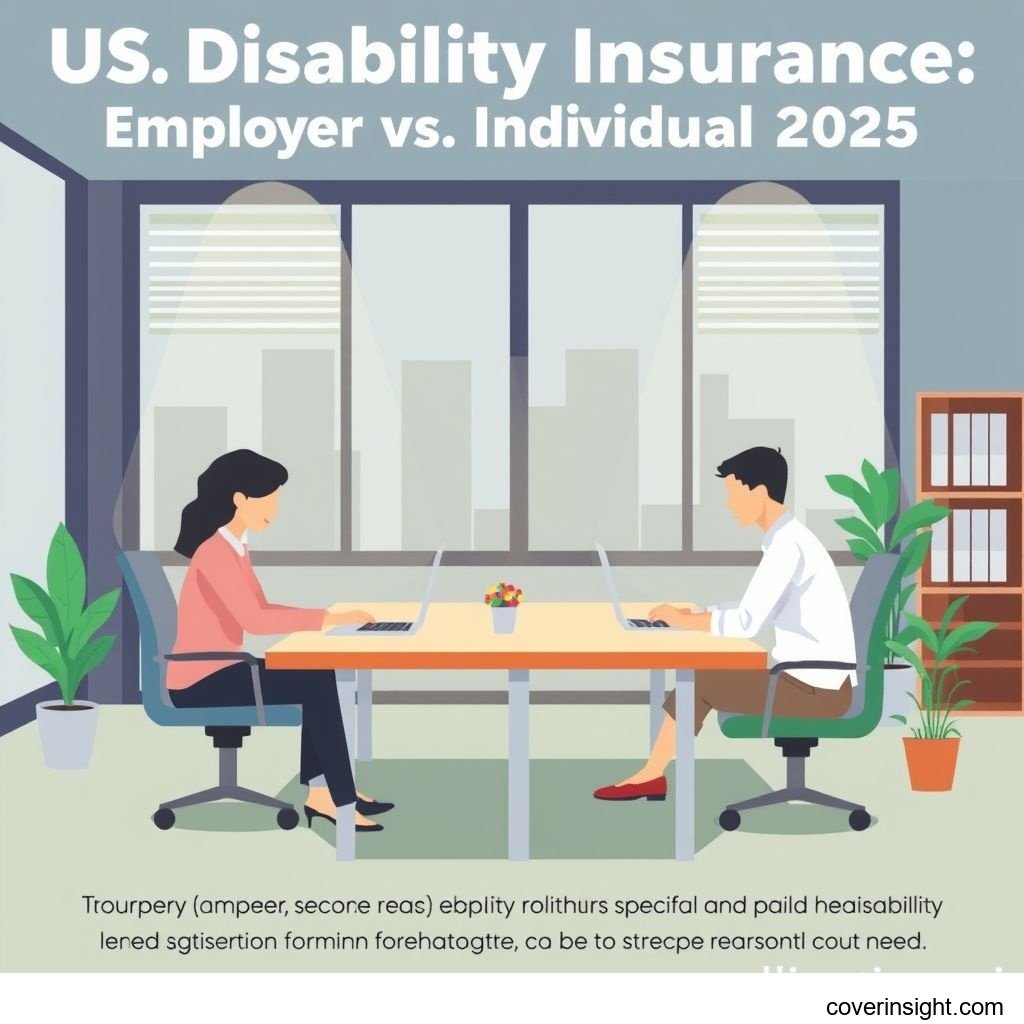Introduction
Navigating the landscape of US disability insurance in 2025 can feel like a labyrinth, but understanding your options is paramount. When unforeseen illness or injury prevents you from working, disability insurance steps in to replace a portion of your income, providing a crucial financial safety net. The primary decision most Americans face is whether to rely on an employer-sponsored policy or to secure an individual plan – or perhaps even a combination of both. Each path has its own set of advantages and considerations, from coverage specifics to cost implications, making an informed choice incredibly important for your long-term financial security.
Coverage Details
Understanding what’s covered and what’s not is the bedrock of choosing the right disability insurance.
What’s Included
Disability insurance generally provides a regular income stream, often a percentage of your pre-disability earnings (typically 50-70%), if you become unable to work due to illness or injury. Both employer-provided and individual policies come with a "waiting period" (also known as an elimination period), which is the time you must be out of work before benefits begin, commonly 30, 60, or 90 days for short-term policies, and often 90, 180, or even 365 days for long-term plans. The "benefit period" defines how long you’ll receive payments – this could range from a few months for short-term policies to several years, or even up to retirement age, for long-term coverage. Employer plans often bundle short-term and sometimes long-term coverage, providing a basic layer of protection, while individual plans offer greater customization in benefit amounts and periods.
Common Exclusions
While disability insurance is a lifesaver, it’s not a magic bullet for every situation. Common exclusions often include disabilities resulting from pre-existing conditions that weren't disclosed or are within a certain look-back period, self-inflicted injuries, acts of war, or participation in illegal activities. Some policies might also exclude disabilities caused by specific high-risk avocations or hobbies unless an extra rider is purchased. It’s always critical to read the fine print; don't just skim over the policy document. For a deeper dive into what's typically excluded, you might find broader insights at Insurance Resources Global.
Cost Analysis
The cost of disability insurance is a major factor, and it varies significantly between employer-sponsored and individual plans.
Price Factors
Several elements play into how much you'll pay for disability insurance premiums. Your age and health status are big ones – younger, healthier individuals typically pay less. Your occupation also matters; a desk job usually translates to lower premiums than a high-risk profession like construction or commercial fishing. The amount of income you want to replace, the length of your waiting period (longer waits mean lower premiums), and the duration of your benefit period (shorter periods mean lower premiums) all directly impact the cost. For individual plans, riders (like cost-of-living adjustments or partial disability benefits) will also add to the expense.
Saving Tips
When it comes to saving money on disability insurance, there are a few smart plays. Employer-provided plans are often significantly cheaper, or even free, as the employer typically subsidizes or fully covers the premiums. This group rate is a considerable perk. For individual policies, opting for a longer waiting period can noticeably reduce your monthly premium, as can choosing a shorter benefit period if your budget is tight. Maintaining good health and opting for a policy that doesn't cover as high a percentage of your income can also trim costs. Always compare quotes from multiple providers to ensure you're getting a competitive rate. Don't be afraid to consult with a professional who understands the nuances of various policies; it could save you a pretty penny in the long run. You can also get more state-specific information from your State Insurance Departments.
FAQs
-
How much does employer vs. individual policies cost?
Employer policies are generally more cost-effective, often paid for entirely or partially by your company, leveraging group rates. Individual policies, while more expensive, offer tailored coverage, portability (they move with you if you change jobs), and benefits that aren't taxable if you pay the premiums with after-tax dollars.
-
What affects premiums?
Premiums are primarily affected by your age, health, occupation, the amount of income you want to replace, the length of the waiting period before benefits kick in, and how long you want to receive benefits (the benefit period).
-
Is it mandatory?
For most individuals, disability insurance is not federally mandatory. However, a handful of states, like California, New York, and New Jersey, have mandatory short-term disability insurance programs funded by employee payroll deductions. It’s always a good idea to check your specific state’s regulations. For general inquiries about insurance regulations, the National Association of Insurance Commissioners is an excellent resource.
-
How to choose?
Choosing between employer and individual policies, or combining them, boils down to your specific needs, budget, and risk tolerance. Evaluate your current employer's offering – does it cover enough of your income? For how long? If there are gaps, an individual policy can fill them. Consider your job stability and long-term career plans.
-
Consequences of no coverage?
The consequences of no disability coverage can be dire. If you become disabled without it, you face the immediate loss of income, potentially leading to depleted savings, reliance on family, debt accumulation, or even bankruptcy. Social Security Disability Insurance (SSDI) exists, but its benefits are often minimal, the approval process can be lengthy and challenging, and it's certainly not something to bank on as your primary safety net. Just over 1 in 4 of today's 20-year-olds will become disabled before reaching age 67, according to the Social Security Administration, and the average long-term disability claim lasts 31.2 months. Imagine going nearly three years without a steady income stream. This is why disability insurance can be worth its weight in gold. For example, consider Sarah, a vibrant marketing professional in Austin, Texas. She always assumed her good health would carry her through. When she suffered a debilitating stroke at 40, leaving her unable to perform her duties, her lack of private disability insurance became a severe financial blow. Her savings quickly evaporated, and navigating the complexities of SSDI while recovering proved an immense burden. An individual policy, even a modest one, could have provided the breathing room she desperately needed. For more general US insurance information, visit US Insurance Home.
Author Insight & Experience
Based on my experience, especially as someone living in the US, I've seen firsthand how quickly life can throw a curveball. We tend to focus on life insurance or health insurance, but disability coverage often gets overlooked, yet it’s arguably just as critical – if not more so, in your working years. You’re statistically more likely to become disabled during your career than to die prematurely. It's a pragmatic investment in your future self and your family's financial stability. Don't wait until it's too late; a little planning now can buy you immense peace of mind later.
Further reading: Insurance Resources Global
Further reading: US Insurance Home







Comments